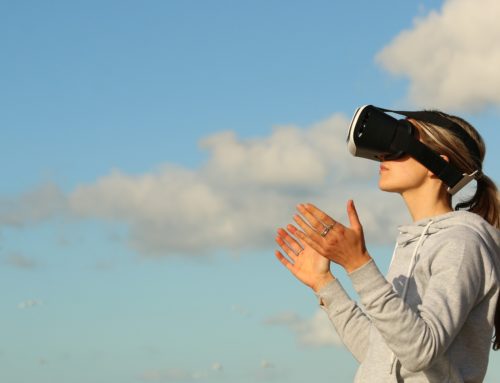They say a picture is worth a thousand words, now imagine how powerful it would be should your marketing tool allow users to have a 360 view of their surroundings, and with a voice relaying stories and information about the room they are viewing.
A physical campus visit would entail having a potential student walking onto the campus for the first time, looking around, passing through various locations such as the library, canteen or lecture hall. The student will indeed be able to visit great facilities but there is only so much that a person can witness and learn by seeing the things around him. The experience would certainly be made much more meaningful and memorable if there was a guide with him to reveal secrets and background information of each location. This is what curated virtual tours aim to do.
Universities all over the world have picked up on this growing trend. With a pandemic taking over the whole world, the need for virtual tours increases tremendously. Even before the global pandemic, virtual tours were a rising trend because it not only helps in search engine optimisation (SEO) but also increases website traffic. Creativity in its delivery is also what can set your apart from your competitors.
Not convinced?
Well, here are a few reasons why you should have a virtual tour with a guide:
- A realistic experience – Virtual tours are like a permanent campus tour. Potential students can access the tour 24/7 from their home. This technology helps create an instant of belonging. Potential students who take the tour can easily imagine what it is like to be studying there.
In addition to that, guides (who can be selected out of your current student body, alumni or staff) can give potential students an inside look into the university’s culture, history and overall vibe. For example, a student leading the virtual tour could talk about the student lounge and its perks such as freshly made waffles with maple syrup (and a scoop of ice cream – if you’re having a sweet tooth) that are served at the café every Friday morning. In contrast, the dean of the university could showcase the university library and talk about its heritage and the fact that the library could be housing a signed first edition of Pablo Neruda’s poetry.
- Move at your own pace – Often during campus tours, you are fit into a schedule and must move with the time set by the guide. However, a virtual tour allows you to take your time viewing the campus. With 356-degree views, you can bask in the campus atmosphere and get a feel of what it would be like to be a student there.
- Increased visitor retention – The current demographic of students looking to start their university life are the Gen Zs. Born in a world of immediate answers and infinite choices, the average attention span of a Gen Z is 8 seconds. In comparison to the 12 second attention span of Millennials, holding their attention is key.
A virtual tour guide acts as the ringmaster at the circus. With a script that is designed to capture viewers attention, evoke excitement and provide insight into the university campus that they are touring.
- Increased traffic and engagement – Thanks to social media, people today have become incredibly visual. 97% of consumers go online to research a product on a regular basis before they make a purchase. In the same manner, almost all students go online to check out the options they have in varying potential universities across the country or world.
No matter what industry you are in, the evidence shows that people are more willing to choose your product or service when they can see who you are and gain an insight into who you are. Having a visual tour guide allows you to check these two boxes as you not only see the campus and experience it, but also gain insight to the university, its dynamics, what it stands for and is about.
- Voice over text – In most cases, universities feature lengthy text in their virtual tours or none at all. According to the Nielsen Norman Group, most web users stay on a website less than 59 seconds. So, if you do not manage to capture a user’s attention in less than a minute, you have lost them. Having a voice over directing the user also allows the potential student to use both his sight as well as sound senses, creating a more realistic scenario.
- more information than brochures- Potential students can get to know the layout of the campus better and get important information – like where to get the best food on campus.
By having a guide who is familiar with the university, potential students can rest assured that the information during the tour is accurate and has credibility.


